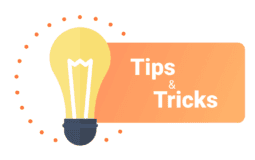WordPress now powers one-third of all sites, which makes it the biggest website builder on the planet. You might have made the right decision and began your journey with one of the best website builders for WordPress. However, if you truly want to use WordPress to its full potential for your website, you’ll need to remain up to date with the latest WordPress hacks and tidbits.
These five WordPress suggestions should help you succeed when constructing a WordPress website.
Tip #1: Choose The Right Hosting
The hosting company you choose for your WordPress site is important to its success. Without hosting, your site would not be allowed to go live online. But that’s not the only reason it’s relevant.
Your hosting provider should give you sufficient capacity to manage the traffic on your site, minimize failures and outages, and give you a lot of fast site speeds.
So, you must choose the best hosting package for your site; there are several options available, each with differing degrees of capability.
WordPress-specific hosting is available, and it’s also the best choice, making it simple to establish your site.
Tip #2: Compress Your Images
Compressing a picture decreases the file size, allowing your site to load quicker and saving you valuable storage space.
High site speed is the pinnacle of website management. Increasing your loading speeds may provide fresh life to otherwise dormant pages, and both users and search engines appreciate a fast-loading site. As a result, you should constantly compress your photographs and videos.
There are several internet programs available for free picture compression, including Kraken.io and Optimizilla. All you have to do is submit the photographs you would like to compress and then obtain the optimized versions. It’s quick and simple, and there’s no need to install any software.
Tip #3: Limit Your Plugins
Plugins extend the capabilities of your website. Unless your theme includes built-in functionality, you’ll require plugins to add functions to your sites, such as contact forms, mailings, or live chats. However, adding too many plugins might cause your site to slow down and potentially compromise its security.
Only install plugins that you truly need, and that will help your visitors and your website – resist the urge to install as many special ones as you can discover. The extra code that plugins add might slow down your site’s loading rates.
Because plugins may be built by anybody, there is a wide range of options and quality. Plugins are officially evaluated for security but not for quality; thus, reading user reviews is always recommended.
Tip #4: Install An SEO Plugin
SEO is critical to the success of any website. If you do not employ SEO, your site will not rank well in search results, which is not ideal for extending your audience! Unless you’re a genuine technician, and even then, you’ll almost certainly want SEO support.
Adding an SEO plugin might simplify your life while also enhancing the profitability of your website. These plugins can analyze your material and keywords, as well as manage all of your website’s technical components.
Tip #5: Get An SSL Certificate
Another option for increasing the reliability of your WordPress website is to obtain an SSL certificate. SSL encryption safeguards users by encrypting the communication between browsers and websites. An SSL certificate informs visitors that their access to your website is secure, which may build trust, increase page visits, and decrease bounce rates.
Your website’s URL will shift from HTTP to HTTPS if you utilize an SSL certificate. Have you ever landed on a website and seen a small green bar beside the URL? If that’s the situation, this website is protected by an SSL certificate.
Apart from just that, Google has prioritized consumer site security and altered its algorithms to reflect this. Google now prioritizes sites with HTTPS URLs over those without. Furthermore, Google may show a red alert for websites that lack an SSL certificate. This alerts customers that they are visiting a hazardous website, which may cause them to be concerned.
Tip #6: Install Google Analytics
Google Analytics is a popular tool for monitoring performances, gathering information, and offering insights into how people engage with your website. As a consequence, it’s a useful tool for assessing your website’s performance.
Installing Google Analytics gives you access to data straight from the WordPress dashboard, enabling you to monitor the number of times individuals visit your site, how long they stay on it, and much more. Google Analytics puts all of that wonderful data at your fingertips.
Tip #7: Use Title Tags and Alt Text
Images may be used to create a webpage. They hold readers’ attention, highlight crucial issues, and bring a drab page to life. They may, however, do more than just look good; they can also benefit your website behind the scenes.
When submitting a photo to your website, make sure to add a title as well as some alt text.
These may look weird initially, but they should be easy to understand. If a visitor can’t see the image because of whatever cause, such as because they’re using a screen reader or the image hasn’t loaded, the alt text describes what it is.
The Bottom Line
WordPress’s miracle is that it is continuously changing, expanding, and developing, which means you are continually discovering, evolving, and growing as well. You’ll be sharing your expertise with new WordPress consumers before you realize it — in the meantime, follow these suggestions, and no one will think you’re a rookie!



